Shillong—The Scotland of the East
Poet Rabindranath Tagore immortalized the picturesque, misty landscape of Shillong in his novel Shesher Kabita, written around 1928- 29; he was there earlier in 1919 for three weeks and then again in 1923 for about two months. But long before that, in 1901, the quintessential monk Swami Vivekananda had sanctified the town of Shillong with his footprints. Situated in the cradle of the Khasi and Jaintia Hills (in what was then Assam, a northeastern province of India), the town was, and still is, a salubrious hill station where people go for vacation or to recoup their health; playing golf is optional on its world-renowned 18-hole course, which opened three years before Swamiji’s visit and was modeled along the lines of St. Andrews of Scotland. If Swamiji saw the course, it would have reminded him of his experience playing golf, for the first and last time, while staying at Ridgely Manor in Stone Ridge, New York, in 1899; there he happened to score a hole-in-one on a par-four hole—a ‘double eagle’ in golf’s lexicon.1
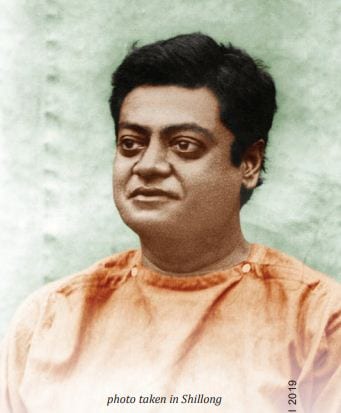
In 1901, Shillong was the administrative headquarters of Assam, which had been formed as the Chief Commissioner’s Province in 1874. At an average altitude of 5,000 feet above sea level, the town is considered one of India’s favorite hill stations. Nostalgic British expatriates often referred to the town as the ‘Scotland of the East’ for its eye-pleasing, rolling-hill landscape. It remained the capital of Assam until 1972, when the State of Meghalaya was formed. Shillong then became the capital of Meghalaya, and Gauhati (now Guwahati) became the capital of Assam.
Prologue
After returning from his second visit to the West in December 1900, Swamiji made only one trip to Mayavati before embarking on his journey to East Bengal (now Bangladesh) and Assam. This excursion was prompted by his earnest desire to take his mother on a pilgrimage, a sacred duty for the eldest son according to Hindu custom. On January 26, 1901, he wrote to Mrs. Bull, ‘I am going to take my mother on pilgrimage next week. It may take months to make the complete round of pilgrimages. This is the one great wish of a Hindu widow. I have brought only misery to my people all my life. I am trying at least to fulfill this one wish of hers.’2
But that didn’t happen until March 24, when Swamiji’s mother, aunt, sister, a cousin’s wife, and Swami Sadananda (Gupta Maharaj, a disciple) left Calcutta and met him in East Bengal to go on the pilgrimage. Swamiji had already been in Dacca since March 19 with some of his disciples; Swamis Nityananda (Nitai) and Nirbhayananda (Kanai) were probably among them as we come to learn later from Swami Brahmananda’s diary.3
Swamiji met his mother’s party at Narayanganj, and they all bathed in the Brahmaputra River at Langalbandha, or Langalbandh* , about twelve miles southeast of Dacca, probably on the Buddhashtami Day (the 8th day of the lunar month in March-April), which fell on March 28 in 1901. Tens of thousands of Hindus attend the bathing ritual, called astami snan, every year on that day.
They went back to Dacca after that, and on April 5 left for Chandranath (near Chittagong) and finally Kamakhya Dham (in Gauhati); both these places are associated with Goddess Sati (Lord Shiva’s consort) and are designated as Shakti Peeth. On their way to Kamakhya, the party stayed for some days at Goalpara and Gauhati.4 Newly emerging information since then indicates that he must have touched a few more places on the banks of the Brahmaputra River, and that his visit to Kamakhya probably preceded the visit to Gauhati. The information is both sketchy and sometimes conflicting.
Swamiji’s health had deteriorated earlier in Dacca, where he spent a total of two weeks meeting people and giving lectures, before embarking on his journey to Assam, and it became progressively worse as he approached Kamakhya; he was suffering from an acute attack of asthma. He then decided (probably on the advice of others) to go to Shillong, where he thought the air would be drier to give him some relief.5 It was probably not a good decision, which Swamiji realized later. There could also be other accompanying reasons for his visit to Shillong, as we shall see.
It is well known that the main sources for tracing Swamiji’s footprints with respect to dates are his personal letters, but he didn’t write any between April 5, when he left Dacca, and May 12, when he went back to Belur Math after his East Bengal and Assam tour. The ‘Cyclonic Monk’, a title given to him in America, was in his elements as he moved constantly on the land and through the waterways of East Bengal and didn’t have time to sit down and write letters; the title would have been more appropriate in that part of the world. So, to establish the date of his arrival at Shillong we have to look at all the sources of information, some credible, some questionable, and some downright incorrect, and draw a logical conclusion. The only thing we know for certain is that he presented two ‘Pandas of Shri Kamakhya Peetham’ with a laudatory letter dated April 17; the letter had ‘Gauhati’ written at the top. The letter is quoted below:
‘I have great pleasure in certifying the great amiability and helpfulness of the brothers Shivakanta and Lakshmikanta, Pandas of Shri Kamakhya Peetham.
They are men who help most and are satisfied with the least.
I can unhesitatingly recommend them to the Hindu public visiting this most holy shrine.’6
According to Niranjan panda, Ramdas panda’s son and Lakshmikanta panda’s grandson, Swamiji stayed at the brothers’ (Shivakanta and Lakshmikanta) house for three days.7 This may be true, because the Kamakhya pilgrims traditionally spent three nights at Kamakhya performing the customary rituals.8 Niranjan panda also said that Swamiji came to Kamakhya through Parbatipur, Amingaon, and Pandughat. It is highly unlikely that Swamiji did that. Since there was no established railroad connection between East Bengal and Assam at that time, he and his party travelled from Chandranath to Pandughat (next to Kamakhya) by steamer, touching various river towns in Assam on the west side of Gauhati along the way.** As far as is known, railway connection between Parbatipur (East Bengal) and Dhubri (Assam) was first established in 1902, and that was extended to Amingaon around 1907.9 Niranjan panda assumed that Swamiji had come by train.
It is a safe assumption that Swamiji took his party to Kamakhya first, at least for his mother’s sake, but exactly when he arrived there is difficult to ascertain. From Pandughat, one has to go through Kamakhya to reach Gauhati. The letter to the pandas, which is the only verifiable document we have, could have been written when he was in Gauhati later. If it were written at Kamakhya, then he would probably have written Kamakhya, or Kamakhya Peetham, at the top instead of Gauhati. On the other hand, Kamakhya is in Gauhati, and so he could have written ‘Gauhati’ from that point of view.
Accepting the latter view as correct, Swamiji must have reached Kamakhya on April 14 and stayed at the panda’s house near the temple for three days and left on April 17 for Gauhati proper. People usually write letters commending the host on the day of departure, after they have experienced the host’s ‘amiability and helpfulness’, and that’s what we presume Swamiji did. In 2001, commemorating the 100th anniversary of Swamiji’s visit to Kamakhya, a plaque with the text of Swamiji’s letter inscribed on it was placed at the house.
Toward Shillong
After three to four days in Gauhati, where Swamiji was allegedly put up by an orthodox Brahmin named Padmanath Bhattacharya (a.k.a Padmanath Saraswati) and gave a few lectures in the town, he left for Shillong in poor health. Rai Saheb Kailash Chandra Das and Jatindra Nath Basu brought Swamiji and his entourage from Gauhati to Shillong, a distance of about 64 miles (102 kms), in a horse-drawn carriage. It took them two days, and the travelers spent the night at a roadside hut along the way. Kailash Chandra Das and Jatindra Nath Basu walked alongside the carriage all the way from Gauhati. Rai Saheb Kailash Chandra welcomed Swamiji to his house in Laban, a predominantly Bengali neighborhood in Shillong, and his honored guest stayed there the entire time he was in town.10
Following the above reasoning, the party probably reached Shillong on April 23, give or take a day depending on the length of his stay in Gauhati. It is hard to imagine that the party made the uphill trip in two days, with two escorts on foot, with women and an ailing Swamiji on board, and the horses requiring periodic rest or being exchanged for fresh ones; three days would have been a more plausible time frame. Swamiji, however, was familiar with this mode of transportation through mountainous roads. He had covered such roads in Switzerland in 1896 in horse-drawn carriages, called ‘diligences’ in that part of the world.
In a Bengali book titled Shillonger Bangalee (The Bengalis of Shillong), written (edited?) by Prof. Shyamadas Bhattacharya (1931-2017),*** one can find a graphic description of Swamiji’s travel from Gauhati to Shillong.11 In his article, ‘Shillong Pahare Swami Vivekananda’ (‘Swami Vivekananda in the Shillong Hills’), Prof. Bhattacharya embellished his facts with some colouring occasionally, therefore making it hard to distinguish fact from fancy. It is unfortunate that he did not cite his sources at the points of use but lumped all of them together at the end of the book as bibliography, making it hard for the inquisitive reader to connect his text with the corresponding source. His article nevertheless provides some interesting materials that can be woven together with other available information to construct an acceptably credible story. (He must have written the article, or at least modified it, after 1997 because he lists the Diamond Jubilee Souvenir (1997) of the Shillong Ramakrishna Mission in the bibliography. The book was published in 2004.)
We will assume that Swamiji’s mother and four other family members accompanied him to Shillong and stayed there the entire time he was there, although there is no clear record that they did. Prof. Bhattacharya mentioned only one carriage taking Swamiji to Shillong, with two companions in it to look after him. If that was true, then those two would be Swami Sadananda, and either Swami Nityananda (Nitai) or Swami Nirbhayananda (Kanai). However, the Life wrote, ‘The Swami, with Swami Sadananda, his own mother, sister, and aunt, and Ramdada’s wife, reached Calcutta from Shillong on May 12.’12 If the women family members were not with him in Shillong, where were they all that time? According to the information provided by Rai Saheb Kailash Chandra Das’s granddaughter, Dipanjali Majumdar, ‘Rai Saheb Kailash Chandra Das and Jatindra Nath Basu brought Swamiji and his companions [italics by the author] from Gauhati to Shillong,’ but she did not reveal who those companions were.13 Available information on Swamiji’s East Bengal and Assam tour says very little about his mother (and his other family members), for whom he was making that ‘complete round of pilgrimages.’
Prof. Bhattacharya’s account of the travel brought up some additional information that Swamiji’s party was accompanied by one Mr. Norton, a British officer, and that Swamiji and his party stayed one night in a village called Umiam, twelve miles from Shillong. It seems that Sir Henry Cotton, then the Chief Commissioner of Assam whom we will meet later, had invited Swamiji to be his guest in Shillong to restore his health, and that it was at the order of Sir Henry Cotton that Mr. Norton was escorting Swamiji to Shillong. Swamiji thanked Sir Henry for his kind offer (to be his guest) saying that his countrymen had already arranged for his stay there.14
In Shillong—with its people
According to Prof. Bhattacharya, many distinguished residents of Shillong came to see Swamiji when he arrived at the Laban house of Rai Saheb Kailash Chandra. He also mentioned the presence of Deputy Commissioner Capt. D. Herbert at the house to control the crowd that had gathered in anticipation of Swamiji’s arrival. Capt. Herbert informed Swamiji that the Civil Surgeon would come to see him that afternoon and so would Sir Henry Cotton the next morning.15 According to the FIBIS (Families In British India Society) of London, Capt. Herbert, I.C.S., was the Deputy Commissioner in Shillong at that time. The Civil Surgeon whom Cotton had instructed to treat Swamiji was Major Robert Neil Campbell, who was the Civil Surgeon of Shillong from 1896-97 to 1906; he was in that position in 1897 when the great earthquake struck Shillong (and Assam) in 1897.16
Some of the prominent citizens present there to welcome Swamiji were: Rai Bahadur Sadaya Charan Das, Rai Saheb Prasanna Kumar Bhattacharya, Upendranath Kanjilal, Bishnuprasad Barua, and Munsi Mohammed Amatullah, just to name a few. This may show that Swamiji had some interaction with the populace, because some of them came back the next morning to visit Swamiji; Hormurai Diengdoh, whom we will meet later was one of them. The visitors more or less covered Shillong’s social and religious spectrums. Rai Bahadur Sadaya Charan Das was the secretary of the Brahmo Samaj (Police Bazaar).17
To get a feel for what the Bengali society of Shillong was like in the early part of the 20th century, we will quote from a book by author Nirad Chaudhuri (no relation), who visited Shillong in that era, as follows:
As regards to the Bengali population of Shillong, we formed two rather conflicting impressions. One was that the women were very much more free at Shillong that at any other place we know of, and the other was that the men were very much less so. It appeared to us that the men at Shillong spent their days shut up in a room and working at their desks. The impression was right because most of the Bengalis at Shillong were clerks in government offices. It also seemed to us that Shillong was a place where monotheism prevailed over polytheism and that in the face of the One-God or Brahma, as we called him following Brahmo theology, our familiar many-gods kept themselves very much in the background…. Nearly all the Bengalis [at Shillong] affected liberal and reformist religious views.18
It seems that the Bengali society of Shillong was in tune with Swamiji’s views, but nothing more can be said about how it was influenced by his visit because there is not much available information about his interaction with the local populace, especially with the Bengalis.
The fact that Shillong had a sizable number of educated Brahmos in the early 20th century might have set the religious tone that Nirad Chaudhuri alluded to. Shillong’s Bengali population, therefore, could have come under the influence of the Brahmo monotheistic movement and was partly deists and partly rationalists. That may also explain why it took the town thirty-six years after Swamiji’s visit to establish a branch of the Ramakrishna Mission, with a gap of eight years between its conception and inception, as we shall see later. The Welsh Presbyterian missionaries, who were trying to evangelize the region, could have influenced that also. They probably looked at Swami Vivekananda in the same way their American counterparts did—with hostility. Who can forget the article ‘An Honest Hindoo’, published in The Interior, a Presbyterian journal in the U.S., in October 1893?19
Sir Henry (John Stedman) Cotton (1845- 1915) was the Chief Commissioner of Assam at the time, stationed in Shillong. He had been born in South India to Indian-born British parents, but was educated in England, from elementary school until he passed his Indian Civil Service Examination. He joined the Service in India in 1867, and after serving in various capacities in Bengal, including Calcutta, he was posted to Shillong in 1896. He served there as the Chief Commissioner until 1902. For his demonstrated sympathy toward India’s struggle for freedom, he was chosen as the president of the Indian National Congress in 1904. He then went back to England and became a Member of the House of Commons.
Sir Henry later wrote a book on his reminiscences of India, titled Indian and Home Memories, which was published in 1911. ‘To India the whole of my matured life has been devoted, and when I retired, after thirty-five years of official service, I did so with profoundest regret,’ he wrote in his book.20 He mentioned a lot about the Assam earthquake of 1897, which he and his wife had narrowly survived but, quite surprisingly, nothing about meeting Swami Vivekananda. In his book, Sir Henry dedicated a chapter titled ‘Men I Have Known.’ There he mentioned names of people like Bunkim Chunder Chatterjee, Robindro Nath Tagore, Arabindo Ghose, Mohendra Lal Sircar, Keshub Chunder Sen, Romesh Chunder Dutt, and of many, many other such luminaries, but no Swami Vivekananda. It is not only surprising, but also puzzlingly mysterious, much to our disappointment. This is what the Life recorded about that encounter:
He had heard much of Swami Vivekananda and was anxious to meet him. At his request the Swami delivered a lecture before resident English officials and a large gathering of Indians. Later, Sir Henry Cotton, who had very much liked the Swami’s speech, visited the latter, exchanged greetings with him, and spent some time discussing India and her national problems. Seeing that the Swami was ill, he instructed the Civil Surgeon to render him all possible medical aid. Throughout the Swami’s stay, the Chief Commissioner daily made enquiries about his health. The Swami spoke of him as a man who understood India’s needs and aspirations, was working nobly for her cause, and deserved the love of the Indian people.21
Sir Henry was sympathetic to Indian causes and the spirit of Indian nationalism, and Swamiji no doubt found in him a compassionate listening ear. They could have conversed in Bengali, because Henry Cotton could speak fluent Bengali, and could also ‘read the characters with facility.’22 They were on the same wavelength in many respects. Both considered education a priority. The Cotton College in Gauhati, the oldest college in Northeast India, was established by Cotton in 1901; it became a full-fledged university (Cotton University) in January 2017. Sir Henry visited Swamiji at the Laban house; he also inquired about his health on a regular basis.
(To be continued. . .)
References
1) Swami Vivekananda in America: New Findings. Asim Chaudhuri. Kolkata: Advaita Ashrama, 2008, pp. 299- 300.
2) The Complete Works of Swami Vivekananda. [hereafter CW] 5: 154
3) ‘Swami Vivekananda in Northeast India and Present Bangladesh’. Swami Alokananda. Diamond Jubilee commemoration Souvenir 1937-1997, Ramakrishna Mission, Shillong, p. 40.
4) Life of Swami Vivekananda by His Eastern and Western Disciples, Kolkata: Advaita Ashrama, 2: 589
5) Ibid.
6) CW. 9:156
7) ‘Swami Vivekananda in Northeast India and Present Bangladesh’. Swami Alokananda, op.cit., p. 39.
8) Kamakhya-Tirtha. Dharanikanta Debsharma Barapujari. Gauhati: Kamakhya Pradarshani, 1995, p. 93.
9) http://shodhganga.inflibnet.ac.in/bitstream/10603/ 66540/10/10_chapter%203.pdf; p. 76.
10) ‘The Unknown Side of Swami Vivekananda.’ Rajiv Roy. The Assam Times, Tuesday, May 6, 2014; https://www.assamtimes.org/node/10815; Swami Alokananda, op. cit., p. 40.
11) ‘Shillong Pahare Swami Vivekananda.’ Shyamadas Bhattacharya. Shillonger Bangalee. Kolkata: Patra Bharati, 2004, pp. 34-36.
12) Life of Swami Vivekananda. 2:590
13) Swami Alokananda, op. cit., p. 40.
14) ‘Shillong Pahare Swami Vivekananda.’ op. cit., p. 35.
15) Ibid., p. 37.
16) Indian and Home Memories. Sir Henry Cotton. London: T. Fisher Unwin, 1911, p. 233.
17) ‘Shillong Pahare Swami Vivekananda.’ op. cit., p. 39.
18) The Autobiography of An Unknown Indian. Nirad C. Chaudhuri. New York: The New York Review of Books, 2001, p. 101.
19) Swami Vivekananda in America: New Findings. Asim Chaudhuri. Kolkata: Advaita Ashrama, pp. 342-344.
20) Indian and Home Memories. op. cit., p. 56.
21) Life of Swami Vivekananda. 2: 590
22) Indian and Home Memories. op. cit., p. 71.
Source : Vedanta Kesari, April, 2019


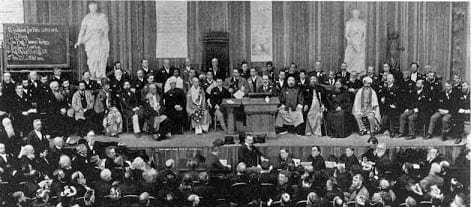

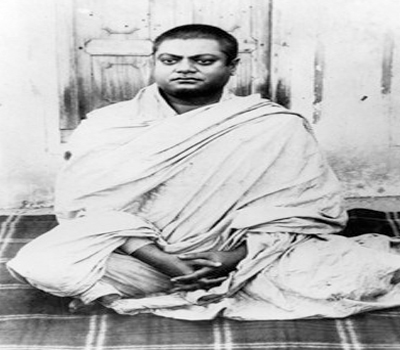
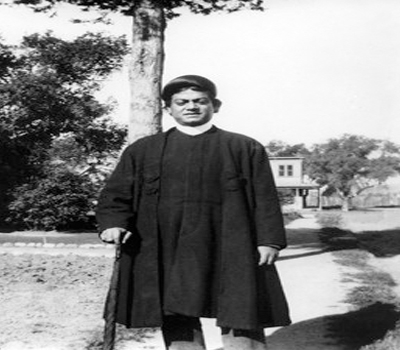
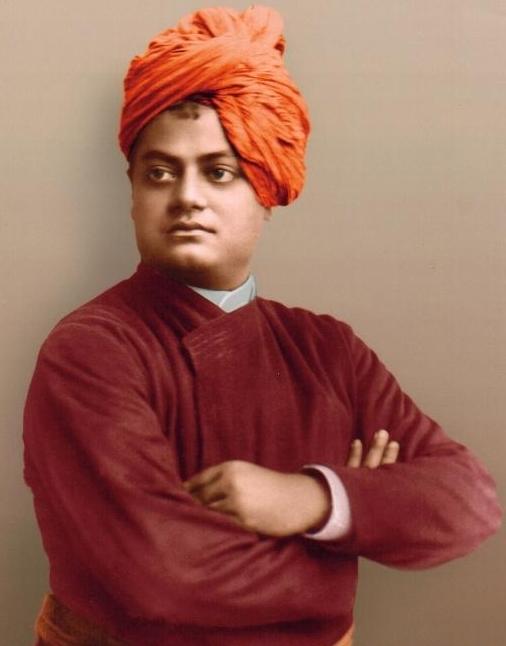
Leave A Comment